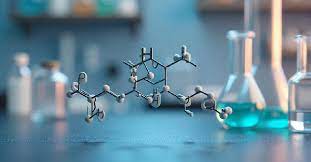
Understanding HCOOCH CH2 H2O in Simple Chemistry Terms
In the world of organic chemistry, understanding how molecules interact, react, and decompose is crucial for applications ranging from pharmaceuticals to energy. Among lesser-known but scientifically intriguing formulas is the combination HCOOCH CH2 H2O, which often sparks questions in academic and research discussions.
This article provides a simplified, science-based explanation of HCOOCH CH2 H2O, its structural background, the reactions it may be involved in, and why it matters in both educational and real-world chemical contexts. If you’re a student, educator, or chemistry enthusiast, this breakdown is crafted to help you grasp the fundamentals and relevance of this chemical combination.
Breaking Down the Chemical Formula: HCOOCH, CH2, and H2O
The formula “HCOOCH CH2 H2O” appears at first as a string of organic compounds and a molecule of water, but let’s look at each part to understand the meaning and significance.
1. HCOOCH – Methyl Formate
The term HCOOCH refers to methyl formate, an organic ester formed by the condensation of formic acid (HCOOH) and methanol (CH3OH). It has the molecular formula C2H4O2 and is commonly written as HCOOCH3. This ester has a sweet smell and is used in manufacturing, perfumes, and as a solvent.
In shorthand notation, some references abbreviate HCOOCH3 as HCOOCH, dropping the “3” in informal or simplified structural discussions. It plays a role in various organic synthesis reactions and is known for its hydrolysis in the presence of water.
2. CH2 – Methylene Group
CH2 refers to a methylene group, a key functional group in organic chemistry composed of two hydrogen atoms bonded to a carbon. It is often part of a larger carbon backbone in hydrocarbons or intermediates in many organic reactions.
In some reaction contexts, CH2 may also indicate methylene carbene or intermediates in polymerization or chain growth reactions. In combination with HCOOCH and H2O, CH2 could play a linking or reactive role depending on the molecular environment.
3. H2O – Water
H2O is a well-known chemical formula for water, a universal solvent and a key reactant or product in many chemical reactions. In organic chemistry, water is often involved in hydrolysis, hydration, or elimination reactions.
Possible Reaction: Hydrolysis of Methyl Formate (HCOOCH3) in Water
One of the most relevant interpretations of HCOOCH CH2 H2O is the hydrolysis reaction of methyl formate in the presence of water, possibly involving an intermediate or a related compound containing a CH2 unit.
Balanced Hydrolysis Reaction:
HCOOCH3+H2O→HCOOH+CH3OH\text{HCOOCH}_3 + \text{H}_2\text{O} \rightarrow \text{HCOOH} + \text{CH}_3\text{OH}HCOOCH3+H2O→HCOOH+CH3OHIn this reaction:
- Methyl formate (HCOOCH3) reacts with water (H2O),
- The products are formic acid (HCOOH) and methanol (CH3OH).
The CH2 unit might not appear directly in this balanced equation, but it could represent a reactive intermediate, especially if it is part of a side-chain or linked molecular structure during synthesis or decomposition.
Where Might HCOOCH CH2 H2O Chemistry Be Relevant?
This combination of compounds has relevance in both laboratory research and industrial applications. Let’s explore a few key areas:
1. Organic Synthesis and Ester Chemistry
Esters like methyl formate are widely used in synthetic organic chemistry. Understanding how they interact with water (hydrolysis) or with CH2 groups (in polymer synthesis or alkylation reactions) helps chemists design better synthetic routes.
2. Fuel and Energy Research
Methyl formate is being investigated as a potential fuel additive or hydrogen storage material. Reactions involving water (hydrolysis or reforming) play a central role in extracting usable energy from such compounds.
3. Polymer and Plastic Manufacturing
CH2 groups are part of countless polymers. If the HCOOCH fragment acts as a functional group in a pre-polymer chain, reactions involving CH2 intermediates and water can influence polymerization or depolymerization processes.
4. Environmental and Atmospheric Chemistry
Compounds like methyl formate exist in trace amounts in Earth’s atmosphere and even in interstellar clouds. The interaction of such molecules with water vapour and reactive CH2 groups under various conditions is studied in astrochemistry.
5. Educational Demonstrations
Simple ester hydrolysis reactions are commonly used in organic chemistry labs to teach reaction mechanisms. Students often work with methyl formate and water to observe ester breakdown in acidic or basic conditions.
How HCOOCH CH2 H2O Reactions Work Mechanistically
In acid-catalyzed hydrolysis, the methyl formate (HCOOCH3) reacts with water as follows:
- Protonation of the ester carbonyl oxygen makes the carbon more electrophilic.
- Nucleophilic attack by water, forming a tetrahedral intermediate.
- Proton transfers within the molecule lead to breakdown.
- Departure of methanol, forming formic acid.
The CH2 part may come into play if this reaction is part of a larger molecule containing alkyl chains or in a transition state that includes a methylene bridge.
Common Misunderstandings About HCOOCH CH2 H2O
Due to its structure, many people confuse HCOOCH with formaldehyde derivatives or assume CH2 is standalone, leading to incorrect assumptions about the reactivity of this combination.
Here’s what to remember:
- HCOOCH most likely refers to methyl formate (HCOOCH3).
- CH2 doesn’t exist freely in most reactions; it usually represents a fragment or is part of a larger compound.
- In the presence of H2O, esters like HCOOCH3 typically undergo hydrolysis.
Key Takeaways for Students and Chemistry Enthusiasts
- The phrase “hcooch ch2 h2o” likely refers to methyl formate, a methylene fragment, and water in a reaction context.
- The most straightforward reaction is hydrolysis of HCOOCH3, yielding formic acid and methanol.
- The chemistry becomes more complex when CH2 is part of a synthetic intermediate, possibly leading to new organic products.
- Applications span energy storage, synthetic chemistry, and environmental science.
Understanding how these components interact helps students grasp broader organic chemistry concepts like ester hydrolysis, functional groups, and intermediate stability.
FAQs
1. What does HCOOCH represent in chemistry?
It usually refers to methyl formate, an ester used in organic synthesis and fuel applications.
2. Is CH2 a stable molecule on its own?
No, CH2 typically appears as a reactive intermediate or part of a compound’s structure.
3. What happens when HCOOCH reacts with H2O?
It undergoes hydrolysis, forming formic acid and methanol under acidic or basic conditions.
4. Can CH2 and H2O form a compound directly?
Not directly; CH2 needs to be bonded within a molecular structure to react with water.
5. Is HCOOCH CH2 H2O a complete compound?
No, it’s a shorthand or informal grouping of chemical entities likely involved in a reaction context.
Conclusion
Understanding chemical formulas like HCOOCH CH2 H2O doesn’t require a PhD—just a curiosity and a basic grasp of organic chemistry. Whether you’re dealing with ester reactions, hydrolysis mechanisms, or advanced synthesis, this combination offers insight into how simple molecules form the backbone of complex responses.
From lab benches to industrial reactors, the behaviour of compounds like methyl formate, methylene groups, and water plays a crucial role in how we understand and manipulate matter. Keep exploring the patterns, and chemistry will continue to make sense—one formula at a time.



